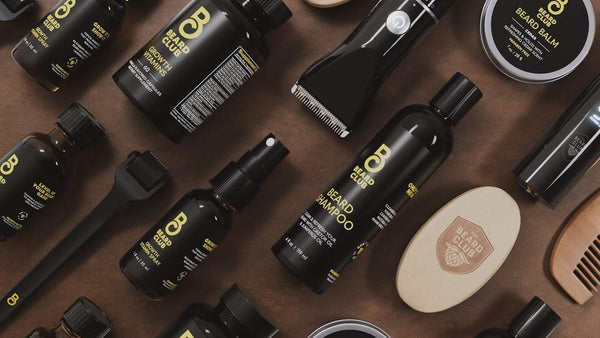How to Create a Sales Funnel on Shopify for Maximum Conversions
Table of Contents
- Introduction
- Understanding the Sales Funnel
- Building Your Shopify Sales Funnel
- Leveraging the PowerCommerce eStore Suite
- Conclusion
- FAQ
Introduction
Did you know that approximately 98% of visitors to your Shopify store will leave without making a purchase? This staggering statistic underscores the importance of having a well-defined sales funnel that effectively guides potential customers through their buying journey. A well-structured sales funnel not only nurtures leads but also converts them into loyal customers, ultimately driving your eCommerce success.
In this blog post, we will dive deep into the essential elements of creating a successful sales funnel on Shopify. We will explore the various stages of the funnel, strategies for each stage, and how you can leverage the PowerCommerce eStore Suite to enhance your funnel's effectiveness. By the end of this guide, you will have a comprehensive understanding of how to create a sales funnel that not only attracts but also retains customers, ensuring sustainable growth for your online business.
Our aim is to empower you with actionable insights and strategies that align with our mission at PowerCommerce: to revolutionize the eCommerce landscape through innovative, AI-powered solutions. Let’s embark on this journey together and discover how to build a compelling sales funnel on Shopify.
Understanding the Sales Funnel
A sales funnel is a visual representation of the customer journey from initial awareness to final purchase and beyond. It consists of several stages, each designed to guide prospects through the buying process. Understanding these stages is crucial for optimizing your sales funnel on Shopify.
The Stages of a Sales Funnel
-
Awareness: This is the top of the funnel, where potential customers first learn about your brand or product. It is crucial to attract the right audience through targeted marketing efforts.
-
Interest: At this stage, visitors express interest in your products. They may browse your website, read product descriptions, or engage with your content. Your goal here is to capture their attention and keep them engaged.
-
Desire: Once visitors are interested, they begin to form a desire for your product. This is the stage where you need to showcase the value and benefits of your offerings effectively.
-
Action: This is the critical stage where visitors convert into paying customers. Your call-to-action (CTA) must be compelling and clear to encourage visitors to complete their purchase.
-
Retention: After a purchase, the focus shifts to retaining customers and encouraging repeat purchases. This involves nurturing the customer relationship through follow-ups and engagement strategies.
Why is a Sales Funnel Important?
A well-defined sales funnel helps you identify potential drop-off points in the customer journey, allowing you to make necessary adjustments to improve conversion rates. By understanding your customers' needs and behaviors at each stage, you can tailor your marketing efforts more effectively, ultimately increasing sales and customer loyalty.
Building Your Shopify Sales Funnel
Now that we understand the importance of a sales funnel, let’s explore how to create one specifically for your Shopify store.
Step 1: Attracting Visitors to Your Shopify Store
The first step in creating a successful sales funnel is to drive traffic to your store. Here are some strategies to attract visitors effectively:
-
Content Marketing: Create valuable content that addresses your target audience's pain points and interests. This can include blog posts, videos, or infographics that resonate with potential customers.
-
Social Media Marketing: Utilize platforms like Facebook, Instagram, and TikTok to engage with your audience. Share stories, promotions, and user-generated content to build community and awareness.
-
Search Engine Optimization (SEO): Optimize your Shopify store for search engines to increase organic traffic. Use relevant keywords, optimize product descriptions, and improve site speed to enhance visibility.
-
Paid Advertising: Consider leveraging PPC campaigns on platforms like Google Ads or Facebook Ads to target specific demographics and drive traffic to your store.
Step 2: Engaging Visitors and Capturing Leads
Once you have attracted visitors to your store, the next step is to engage them effectively. Here are some strategies:
-
Effective Landing Pages: Create compelling landing pages that speak directly to your audience's needs and desires. Use clear headlines, concise copy, and strong CTAs to encourage sign-ups or purchases.
-
Offering Lead Magnets: Provide valuable resources such as eBooks, discounts, or exclusive content in exchange for visitors' email addresses. This helps build your email list for future marketing efforts.
-
Email Marketing: Use email campaigns to nurture leads who have shown interest in your products. Segment your audience based on behaviors and preferences to send personalized messages.
Step 3: Nurturing Leads into Customers
As leads enter the consideration stage, it’s essential to nurture them effectively:
-
Educational Content: Provide information that helps potential customers make informed decisions. This can come in the form of product comparisons, how-to guides, or customer testimonials.
-
Retargeting Ads: Implement retargeting ads to reach visitors who have previously engaged with your store but didn’t convert. This keeps your brand top-of-mind and encourages them to return.
-
Social Proof: Showcase positive customer reviews and testimonials on your product pages. This builds trust and helps potential customers feel more confident in their purchasing decisions.
Step 4: Converting Visitors into Customers
Now that your leads are nurtured, it’s time to convert them into paying customers:
-
Optimized Checkout Process: Ensure that your Shopify checkout process is seamless and user-friendly. Reduce unnecessary steps and provide multiple payment options to enhance the customer experience.
-
Compelling CTAs: Use strong, action-oriented CTAs that create urgency and encourage visitors to complete their purchases. Phrases like "Limited Time Offer" or "Buy Now" can prompt action.
-
Abandoned Cart Recovery: Implement an abandoned cart recovery system that automatically sends emails to customers who have left items in their carts. This serves as a gentle reminder and can significantly improve conversion rates.
Step 5: Retaining Customers for Repeat Purchases
The final stage of your sales funnel focuses on retaining customers and encouraging repeat business:
-
Follow-Up Emails: Send thank-you emails and personalized follow-ups after a purchase. This helps maintain the relationship and encourages future purchases.
-
Loyalty Programs: Consider implementing a loyalty program that rewards repeat customers with points, discounts, or exclusive offers. This incentivizes them to return to your store.
-
Feedback and Surveys: Ask customers for feedback on their shopping experience. This not only shows that you value their opinions but also provides valuable insights for improvement.
Leveraging the PowerCommerce eStore Suite
At PowerCommerce, we understand that creating a successful sales funnel requires not only strategy but also the right tools. Our flagship offering, the PowerCommerce eStore Suite, is designed to empower eCommerce brands with cutting-edge, AI-driven solutions that enhance storefront performance and drive conversions.
Key Features of the PowerCommerce eStore Suite
-
Storefront Optimization: Our team specializes in storefront optimization, ensuring your online store is visually appealing and user-friendly, which is crucial for capturing and retaining customer interest.
-
Advanced Analytics: With our advanced analytics tools, you can track key performance metrics and gain insights into customer behavior, allowing you to make data-driven decisions that enhance your sales funnel.
-
Seamless Shopify Migrations: If you’re looking to transition to Shopify or optimize your existing store, our migration services ensure a smooth process that preserves your data integrity and SEO value.
-
Personalized Marketing Strategies: Our team crafts bespoke marketing strategies that align your digital initiatives with business goals, driving sustainable growth through effective marketing campaigns.
By utilizing the PowerCommerce eStore Suite, you can elevate your sales funnel and maximize your eCommerce success.
Conclusion
Creating a sales funnel on Shopify is essential for turning casual visitors into loyal customers. By understanding the stages of the funnel and implementing effective strategies at each stage, you can significantly improve your conversion rates and drive sustainable growth for your online business.
As we’ve explored, the journey begins with attracting visitors, engaging them effectively, nurturing leads, converting them into customers, and retaining them for future purchases. By leveraging innovative solutions like the PowerCommerce eStore Suite, you can enhance each stage of your sales funnel and unlock your eCommerce potential.
So, what are you waiting for? Start building your Shopify sales funnel today and watch your online store thrive!
FAQ
What is a sales funnel system?
A sales funnel system is an automated process that generates, nurtures, and converts traffic into sales over time. It consists of various assets and programs that work together to influence customers to make a purchase.
What are the four stages of a sales funnel?
The four stages of a sales funnel include Awareness, Interest, Desire, and Action. Each stage represents a step in the sales cycle where potential customers move closer to making a purchase.
How do you build a sales funnel?
To build an effective sales funnel, you need to understand your customers, their behaviors, and their needs at each stage. Create product pages and marketing materials that address those needs, and use tools to monitor and optimize performance.
What metrics should I monitor in my sales funnel?
Important metrics to track include conversion rate, lead-to-customer ratio, cost per acquisition, average deal size, sales cycle length, and churn rate. Monitoring these metrics helps you evaluate the effectiveness of your sales funnel.
POWER your ecommerce with our weekly insights and updates!
Stay aligned on what's happening in the commerce world
Email Address
Handpicked for You
21 March 2025 / Blog
How to Use Shopify Themes: A Comprehensive Guide for E-commerce Success
Read more21 March 2025 / Blog
How to Find SKU on DSers: A Comprehensive Guide for E-commerce Professionals
Read more21 March 2025 / Blog


